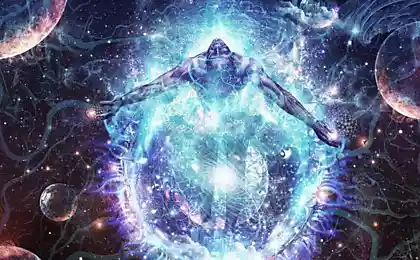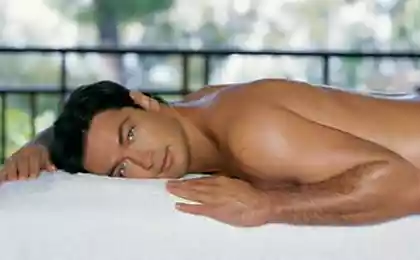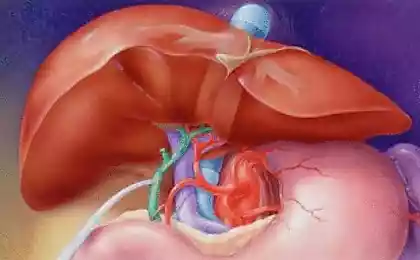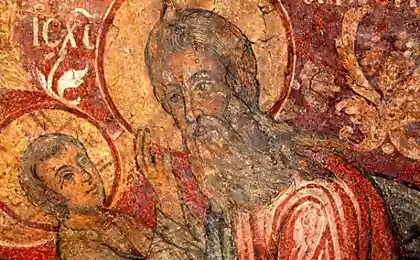247
Holiday Imbolk - the eyes and the targets!

According to the traditions of many peoples, Imbolk (Feast of the Wheel of the Year) is the time of Mother Nature’s awakening from winter sleep. In ancient times, it was believed that this was the time of the reunion of God and the goddess of fertility.
From a cosmic point of view, Imbolk is the middle between the winter solstice and the spring equinox.
The Wheel of the Year consists of two so-called Magic Crosses, and the Imbolk, respectively, refers to the second Magic Cross.
In everyday life, this is a time of liberation from the old and bringing the new into life. In other words, this is a time of change and new beginnings, I would even say that this is a moment of purification before the update itself.
Imbolk is one of the eight strongest Days of Power for carrying out various rituals, rituals, creating (or cleansing and recharging) amulets, talismans and amulets, including runic ones.
Classically, Imbolk begins on the evening of February 1, and is celebrated on February 2 all day.
In some traditions, Imbolk is also called the day of St. Brigitte, the Feast of Lights, the Celtic “Feast of Candles”. Sreteny, Oimelkom, Pan Festival, Lupercalie, Snowdrops Festival, Groundhog Day. All these holidays are associated with the development of a person of pure consciousness.
In the South Slavs, the corresponding holiday was called Gromnitsa, because in some regions of modern Europe, thunderstorms have already occurred in February.
In mythologies and fairy tales of various peoples, Imbolk is played as a kidnapping by a certain scoundrel or cunning sorcerer of a pure virgin or goddess.
In Norse mythology, this is the plot of the sorcerer Tiazzi’s abduction of the goddess of eternal youth Idun (which is described in one of my books). In Pushkin’s fairy tales, this is, of course, the plot of Lyudmila’s abduction by the evil wizard Chernomor.
Many may have a reasonable question: “Now in the yard in the middle of winter, what spring can we talk about?” But as mentioned earlier, Imbolk, this is the time of awakening from winter sleep, this is the time when daylight becomes noticeably longer.
According to ancient beliefs, it was believed that in these first February days, the Great Goddess had already recovered from childbirth, and was breastfeeding the little god - and the very name of the holiday, Imbolc, dates, presumably, to the Old Irish "mblek" ("milk").
Returning to Norse mythology, let me assume that the Great Goddess is the consort of the god Odin, the guardian of the hearth and family union, the goddess Frigg, and the “little god” is the god of Light, Sun and Spring, the radiant Baldr.
But back to the origins of the holiday. It should be remembered that Imbolk is an ancient Celtic festival, which is primarily associated with the Celtic goddess Brigid.
The ancient Celts believed that at this time of year the winter aspect of the Goddess (the old woman in a black cloak) was replaced by a Virgin wearing a snow-white cloak (Brigit, the Virgin Goddess). The ancient Celts, anticipating the return of the Goddess from darkness, lit lights so that she could see her Path. Therefore, this holiday is also called (as noted earlier, the Celtic “Feast of Candles” or the Feast of Lights).
From this day until March 21st comes the time of Brigitte, the time when Nature is ready for growth and renewal.
I cannot ignore the borrowing by Christianity of this ancient holiday, where the Vatican changed Imbolk into the “Purification of the Virgin Mary”, and the goddess Brigid into St. Bridget. Apparently, unable to eradicate this holiday, the Vatican went down the beaten path – showing plagiarism, the Vatican distorted the essence of the holiday and introduced it into its church calendar.
Since we touched upon the topic of the names of various goddesses and saints, it is fair to note that each nation had its own “symbol-goddess” of this feast, here are the names of only some of them: Aradia, Athena, Inanna, Gaia, Phebrois, were also revered in these days as gods of love and fertility, such as Aongus, Eros and Phebruus, Freyr (Ingue).
One of the main symbols of the Celtic goddess is the "Brigid Cross" - Straw Cross, used as an amulet.
Let’s go back to history and mythology today!!
How can we benefit from this holiday?
First of all, Imbolk, it is a celebration of Light and purification! Therefore, it is necessary on this day (these days) to clean the house, both physical and energy. If you have a cleansing technique, clean yourself and your loved ones (with their consent, of course).
Charge, clean, activate your amulets, talismans and amulets.
Imbolk is a time for rituals for abundant harvest, profit, acquisition.
On the night of 1 to 2 February, with the help of various energy techniques, stagnant situations in household affairs, business, love are well rocked.
It would be good to build an altar in honor of the Great Goddess, on which there should be such symbols as Bread Virgins, Brooms, white flowers, Wheels of candles, Brigid Crosses, wands with an acorn at the end.
The altar can be supplemented by:
Plants are suitable for this: diagil, basil, bay leaf, blackberries, iris, myrrh, violets, all white and yellow flowers.
Food, suitable for this: pumpkin seeds, black seeds, poppies, round buns, bread, all dairy products, pepper, onion, garlic, raisins, wine with spices and herbal teas.
- Incense, suitable for this: basil, laurel, cinnamon, violet, vanilla, myrrh.
- Stones, for this will suit: amethyst, blood, pomegranate, ruby, onyx, turquoise.
The main ritual of the holiday is the lighting of fire!!
The Imbolka Fire is the first fire to be lit during the Festival, in the dark. And from him to light everything else.
In urban settings, it can be a large white candle that lights other candles. Friends, I emphasize that the candle should be white, as a symbol of Purity and Purification!
Those who are lucky (like me, for example) to meet Imbolk in nature, it is desirable to light a fire.
Further, we dedicate this fire (candle, fire) to Purification, Healing, the power of Light, the Great Goddess, the gods of Light and Spring, the awakening of Mother Nature,
It is believed that the more candles you light on this holiday, the more you will help the Light Forces. Each candle can have its own program.
Ideally, the fire should not be extinguished for 12 days, if one candle burns, another is lit from it. Of course, given modern life, this is a bit difficult, but here we can help the lamp and lamp oil. Regulate the wick, and by adding oil to the lamp once a day, you can perform an ancient ritual.
It is believed that this ritual gave rise to the idea of the Olympic and eternal flame.
In the days of Imbolk, meditations are also strong, with the help of which you can “correct” various life incorrectness.
Friends, I will be glad if the information read will go to your benefit and to expand your worldview.
With respect to all, writer and runologist, Lev Nevsky.
Copyright: Lev Nevsky, 2022
Where can I get promotional codes for Tasty and that's it?
Technical hemp in Ukraine: why grow it for farmers?























